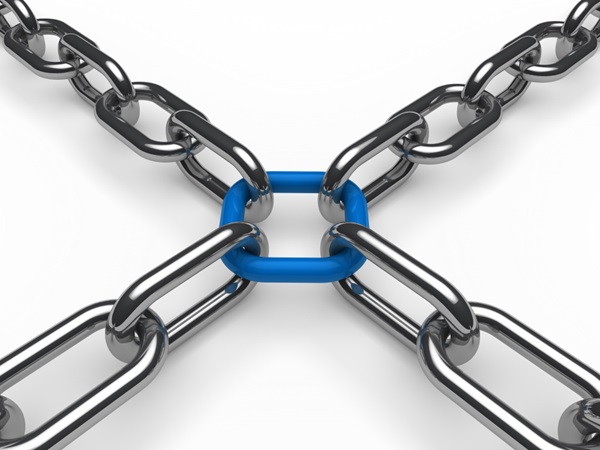How to Optimize Internal Links for SEO: Best Practices and Strategies
In the world of SEO (Search Engine Optimization), there’s more to optimizing your website than just optimizing your content and building backlinks. One often-underestimated element of SEO is the internal linking structure of your website. Internal links play a vital role in improving your website’s visibility in search engine results and enhancing user experience. In this comprehensive guide, we will delve into the world of internal links, understanding their significance, exploring best practices, and equipping you with strategies to optimize your website’s internal linking for SEO.
Understanding the Basics of Internal Links
Before we dive into the strategies, let’s establish a fundamental understanding of internal links. Internal links are links that connect one page on a website to another page on the same site. These links are a powerful tool that serves several essential purposes in the context of SEO and user experience:
-
Navigation: Internal links help users navigate your website by providing pathways to related or relevant content.
-
Content Flow: They establish a content hierarchy and guide users through the information on your website.
-
Crawlability: Search engine crawlers use internal links to discover and index your content effectively.
-
Page Authority: Internal links can distribute “link juice” (a measure of a page’s authority) from one page to another, potentially boosting the ranking of the linked page.
-
Keyword Relevance: When used strategically, internal links can signal the importance of specific keywords to search engines.
Types of Internal Links
Internal links come in various forms, each with its own purpose and usage:
-
Contextual Links: These are embedded within the content and are typically used to direct users to related or relevant content. Contextual links are often keyword-rich, providing valuable signals to search engines.
-
Navigation Links: These links are part of the website’s navigation menu, including the header, footer, or sidebars. They help users find their way around the site and access important pages.
-
Breadcrumb Links: Breadcrumbs are a series of internal links that show the hierarchical structure of a website. They help users understand where a page fits within the site’s organization.
-
Image Links: Images can also serve as internal links when they lead to other pages on the same website. Alt text for the image should be optimized for SEO.
Internal Links vs. External Links
It’s essential to differentiate between internal and external links:
-
Internal Links: These link to other pages within your website.
-
External Links: These point to pages on other websites. While external links are valuable for SEO, we’ll focus on optimizing internal links in this guide.
The Significance of Internal Links for SEO
Internal links are a critical component of SEO for several reasons:
1. Crawlability and Indexing
Search engine crawlers use internal links to navigate and index your website’s content. When you link to new or updated content, you make it easier for search engines to find and crawl those pages. This is especially important for new content or pages deep within your site’s structure.
2. Page Authority Distribution
Internal links can distribute page authority (link juice) throughout your website. When you link from a high-authority page to a lower-authority page, you can boost the latter’s chances of ranking higher in search results.
3. Keyword Relevance and SEO
Strategically placed internal links with relevant anchor text can signal to search engines the importance of specific keywords and phrases on your site. This can improve your site’s ranking for those keywords.
4. Improved User Experience
A well-structured internal linking system can enhance user experience by guiding visitors to related content and helping them find what they’re looking for. This can lead to longer session durations and lower bounce rates, both of which are positive signals to search engines.
Internal Linking Best Practices
Now that we’ve established the significance of internal links, let’s explore best practices to optimize your website’s internal linking for SEO:
1. Use Descriptive Anchor Text
Anchor text is the clickable text in a hyperlink. Use descriptive and relevant anchor text that clearly communicates the content of the linked page. This helps both users and search engines understand the purpose of the link.
2. Prioritize Contextual Links
Contextual links embedded within your content are particularly valuable for SEO. They provide context to the user and are often rich in keywords. Use these links to direct users to related content.
3. Link to High-Priority Pages
Identify the most important pages on your website and ensure they receive a significant amount of internal links. These pages may include your homepage, cornerstone content, or key landing pages.
4. Create a Logical Site Structure
Organize your website’s content into a logical hierarchy. A clear structure makes it easier for users and search engines to navigate your site. Breadcrumbs can help reinforce this hierarchy.
5. Use a Sitemap
In addition to your website’s navigation, create an HTML sitemap that lists all your pages. This provides an easily accessible overview of your content and can assist both users and search engines.
6. Update and Audit Your Links
Regularly review and audit your internal links. Remove or update broken links, and ensure that the anchor text and destination pages remain relevant.
7. Avoid Overloading with Links
While internal links are beneficial, avoid overloading your pages with links. Too many links can overwhelm users and dilute the SEO value of each link. Focus on quality over quantity.
8. Link Deep into Your Site
Don’t just link to your homepage. Link deep into your site to boost the visibility of inner pages. This can help distribute authority throughout your website.
9. Utilize Tools for Internal Linking
Various tools are available for optimizing internal links, such as Ahrefs’ internal link opportunities. These tools provide insights and suggestions for improving your internal linking structure.
10. Consider User Intent
Think about user intent when creating internal links. What might users want to find next? Anticipate their needs and provide links to related and valuable content.
How Many Internal Links per Page?
A common question is, “How many internal links should I include on a page for SEO?” There’s no fixed number because it depends on the content and structure of your site. However, a general guideline is to include enough internal links to provide valuable navigation and context without overwhelming users. It’s essential to focus on relevance and quality over quantity.
Using Markdown for Internal Links
If you’re creating content using Markdown, you can create internal links like this: [Link Text](URL). Simply replace “Link Text” with your desired anchor text and “URL” with the URL of the destination page on your website.
Tools for Internal Linking
In addition to Ahrefs, several other tools can assist you in optimizing your website’s internal linking structure:
-
Yoast SEO (for WordPress): This popular WordPress plugin provides guidance on optimizing internal links and can analyze your content for SEO improvements.
-
Screaming Frog SEO Spider: This tool can crawl your website and provide insights into your internal linking structure, including broken links and anchor text analysis.
-
Google Search Console: Google’s Search Console offers insights into how Googlebot crawls and indexes your site, including internal linking analysis.
-
SEMrush: This comprehensive SEO tool can help you identify internal linking opportunities and issues on your site.
- Ahrefs: Ahrefs is a paid tool that provides a number of features for tracking the performance of your internal links, such as the “Site Audit” feature and the “Internal Backlinks” feature.
Conclusion
Optimizing your website’s internal links is a crucial component of effective SEO. A well-structured internal linking system not only enhances your site’s visibility in search results but also improves user experience by guiding visitors to valuable content.
By using descriptive anchor text, prioritizing contextual links, and following best practices for internal linking, you can harness the power of internal links to boost your website’s search engine rankings and user engagement. Regularly audit and update your links, consider user intent, and employ tools to enhance your internal linking strategy. In a world where user experience and SEO are interconnected, optimizing your internal links is a strategic move that can positively impact your website’s performance and ranking.











